Every so often, a social media post pops up asking, “Where did all of the barn rats go?” or, “Why does no one want to work for it anymore?” The answer is simple: They’re still right here. They just don’t have the finances to be in the big barns that travel the circuit. They’re in the back yards and local barns, regional show circuits, and Interscholastic Equestrian Association teams.
When finances are a roadblock, their climb into the big ring seems impossibly steep. A kid can clean as many stalls, groom as many horses and scrounge for as many chances to sit in the saddle as they can, but it will only add up as high as their income will take them. They need a trainer willing to fight for them, throw them the opportunities and network with other trainers to raise them up so they can try to get just a crumb of the big shows.
I have one of those riders, and amazingly enough, a TikTok video could change her life forever. That video alerted us to the existence The Mayes Foundation, a nonprofit dedicated to supporting junior hunter/jumper riders. Trainers can apply for grants from the organization to that trainers can apply for grants to help deserving students reach their goals. A top grant contender is a rider that is passionate and driven, has talent and desire, but lacks the financial means to participate in the sport. It’s fueled by donations from other equestrian professionals and donors who want to support such riders. I knew exactly who I wanted to apply for.
Lacie Hurst first caught my eye years ago, while I was passing the ring years at the Prince George’s Equestrian Center during the Black-Eyed Susan (BEST) Horse Show Series. She was piloting an obviously tricky small pony, galloping around the ring at Mach speed. Where you would expect a child to be clinging on for dear life, instead there was an elegantly poised young rider who looked determined and collected while expertly guiding the very green pony through the course.
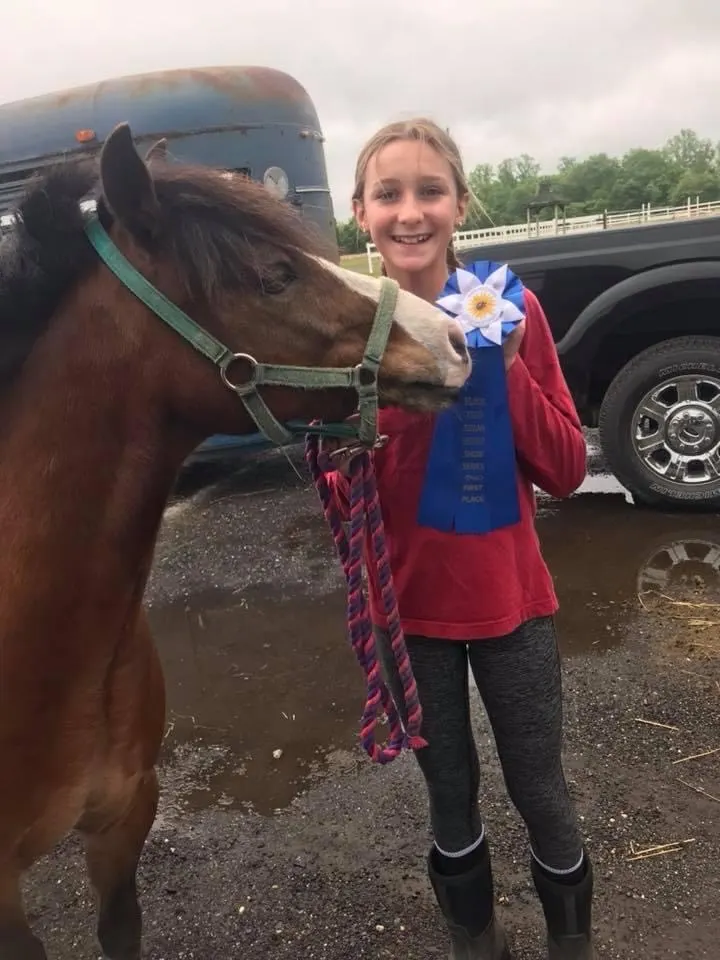
“Man! I want that rider! They don’t make them tough like that anymore,” commented the trainer I was walking with. I couldn’t agree more. It wasn’t until the pair exited the ring that I had realized it was Lacie, my good friend’s 10-year-old sister. I had been so caught up in watching her ride that I didn’t notice the pony had only two and a half wooly legs clipped. That’s the effect that Lacie’s riding has to this day: Her position, dedication and attention to detail demands the attention of the judge and spectators alike. Each time Lacie went into the ring that day, people stopped walking by the ring, stopped their conversations and watched.
Lacie grew up riding at the same farm as me, Oak Crest Farm in Harwood, Maryland, then owned by Tina Emmerich. Tina had a different way of teaching the next generation of riders. Saturday lessons grew into weeks of summer camp, which grew to your parents dropping you off at first light until dark. You learned everything about horses, it wasn’t just show up and ride. You wanted a horse to ride? Find a few stalls to clean. You wanted another horse to ride? Well, the hay’s cut and the wagon’s on its way in, and it doesn’t unload itself. Payment was in the form of a soda per load and a free ride on a horse of your choice. You didn’t just learn the riding, you earned it. If you wanted to go to a horse show, you learned the proper grooming, bathing, clipping and braiding to be able to do it yourself. The knowledge opportunities around the farm were endless if you worked for them.
It’s a piece missing in a lot of today’s child riders. There isn’t anything wrong with having the ability to pay for services for your horses; it creates jobs and powers our modern barns today. And who does it create jobs for? The barn rats, which I counted myself among growing up. I built my career in horses around working the shows. I was noticed at a clinic by Rachel Kennedy and went on to be a rider and trainer for ESP Farm. I manage ESP Farm “North” each winter for clients who stay home, and I’m the trainer at Oak Crest Farm, now owned by Robert and Teresa Sheehi. I have Rachel to thank for my breaking into a world of horse showing.
ADVERTISEMENT
It takes a trainer that sees the ability in someone and helps set them up for success. I would not be the trusted trainer I am today without those who pushed me to succeed. Now, I intend to pass along my knowledge and provide every opportunity I can for those who don’t have the finances to accomplish their goals. There is something about finding a rider that has the grit and the aspirations to learn for themselves that brings out the horse girl you were growing up.
On March 6, I sent in my application to The Mayes Foundation, seeking a grant for Lacie to pursue qualifying for the Maryland Horse Show Association’s Gittins Horsemanship Finals on Oct. 23. On Easter, I received a call from found Ashley Holsinger, with the news Lacie had received the grant. And the road to Gittings Finals began.
At Lacie’s next lesson we gathered her family around, and I handed her a letter. As I watched Lacie read the letter, I knew that even if we didn’t make it to Finals that this would be a memorable experience for everyone involved. Lacie would know her hard work was recognized.
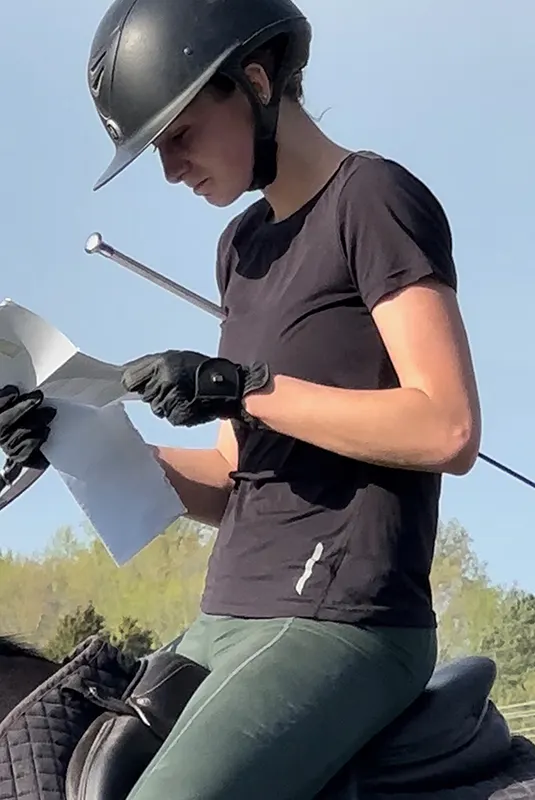
Lacie and her horse, The One And Only Ivan, attended their first Gittings horse show on March 25 at the same place I first saw her ride. Not only was it her first Gittings class, but it was also her and “Ivan’s” first time in the 3’ division. Just a year earlier, she’d been taking Ivan, who she pulled from a field as a green 11-year-old, in his first flat class. She taught him everything he knows, and they placed second that day—3 points in the bank for the 10 needed to quality. Another trainer approached me and asked, “Is that your rider? That’s a tough horse, and she doesn’t move.” We were on cloud nine and hopeful.
Then came the April shows. Ivan was struggling with his hind end. He wasn’t lame, but he wasn’t quite right. A diet change for potential PSSM helped him, and they seemed to be back on track in the show ring. Or so we thought.
On Sunday morning of the May show, Lacie asked me to look at Ivan’s right eye. From across the aisle, I could see that something was wrong: His pupil had gone opaque. He received immediate on-site veterinary care and follow-up care from an ophthalmologist who confirmed Ivan had leptospirosis, which had caused the sudden blindness in his right eye and appeared to be affecting his left eye as well. Ivan and Lacie’s “competition” for the year changed from Gittings Finals to beating leptospirosis to save what vision he had left.
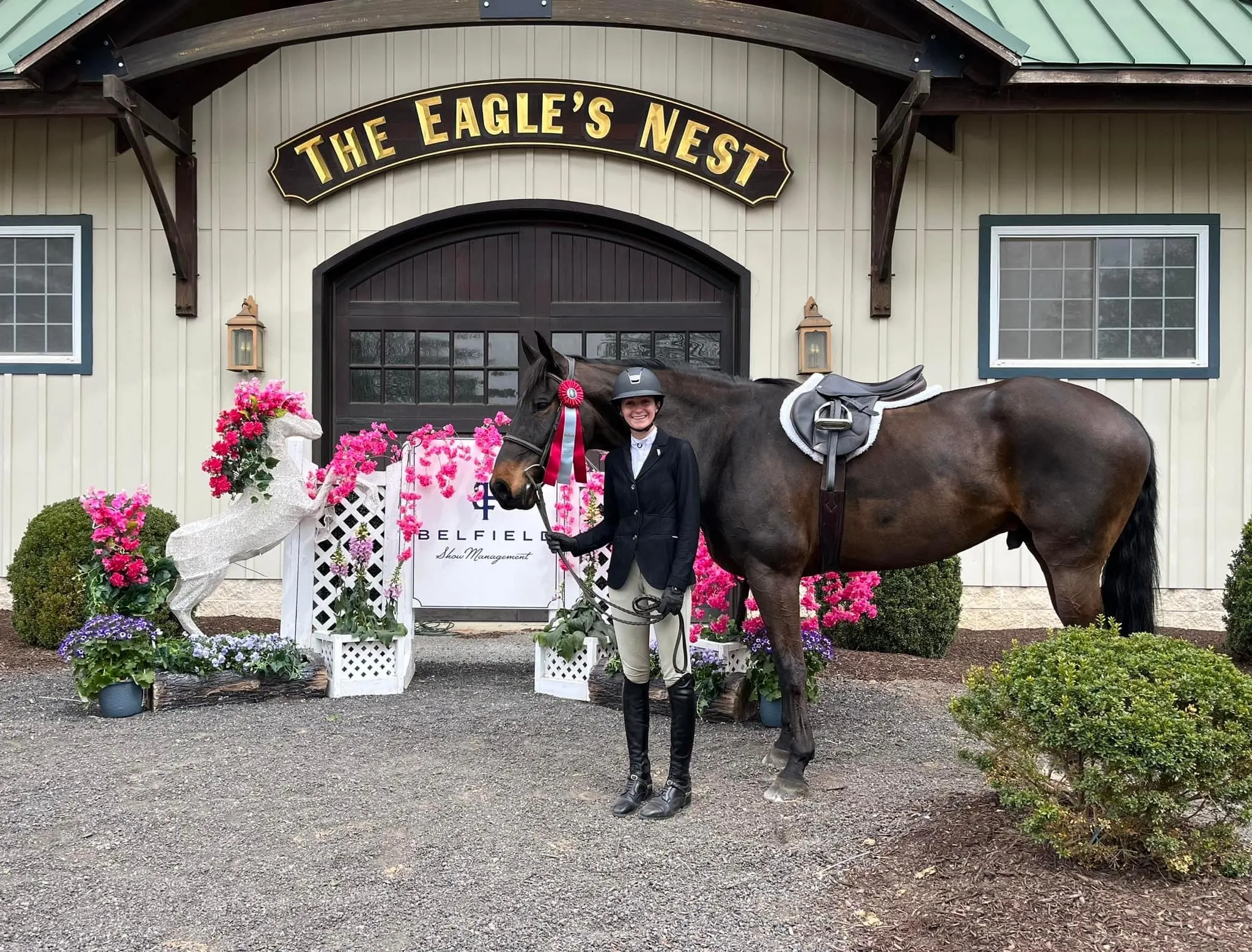
So, what do you do when you have a kid who finally had all of the tools to be successful have the most important one, the horse, taken away? You call in reinforcements. I called Rachel. I explained the situation and asked if she knew of a suitable horse. There was a long pause, possibly some choice words muttered under her breath while she thought out loud to herself, and then she simply said: “Andy. It’s a shot in the dark, but let’s try Andy. It’ll be my donation to the foundation.”
ADVERTISEMENT
Fandango: her former six-bar, “I’m right, you’re wrong,” grand prix jumper was now destined to, hopefully, be a 3’ children’s equitation horse. I can’t tell you if we thought it would actually work or if we were scrounging for anything to help Lacie, but I can tell we will feel forever grateful to Rachel for offering her personal horse to fulfill 17-year-old local barn rider’s aspirations. For free.
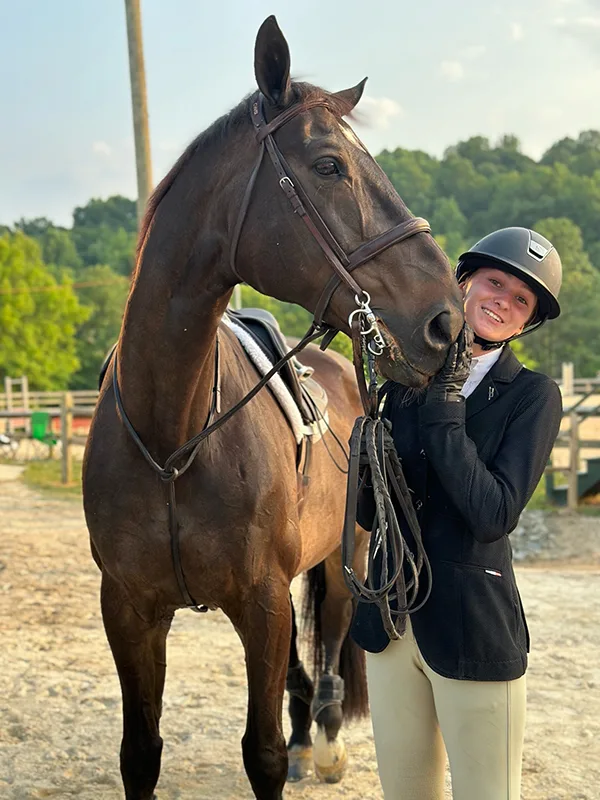
During Lacie’s first ride on Andy, she fell off. Well, technically stepped off after they miscommunicated about where to leave jumping a 2’ fence. Embarrassed but unscathed, Lacie jumped back on. With the first unplanned dismount out of the way, the rest was history. Each ride was better than the last as they learned to trust each other. On days I couldn’t get to ESP, Lacie took lessons with ESP assistant trainer Molly Allen. Molly herself was a gritty lesson kid scrounging for opportunities too, so she understood the assignment.
The June BEST show quickly arrived, where Andy settled in like the professional he is. Saturday’s Gittings class had some bobbles, but for their first show together and Andy’s first hunter/equitation show ever, we were elated. On Sunday they were called back third to test.
I could barely watch. I had to walk away from everyone to the other side of the ring. Is this how parents feel watching their kids show? It felt like an eternity waiting for those results. When we learned Lacie had moved up to second after the test, we celebrated. All the hard work crammed into three short weeks of preparing a new team worked. This will work. We might just see Gittings Horsemanship Finals in October after all.
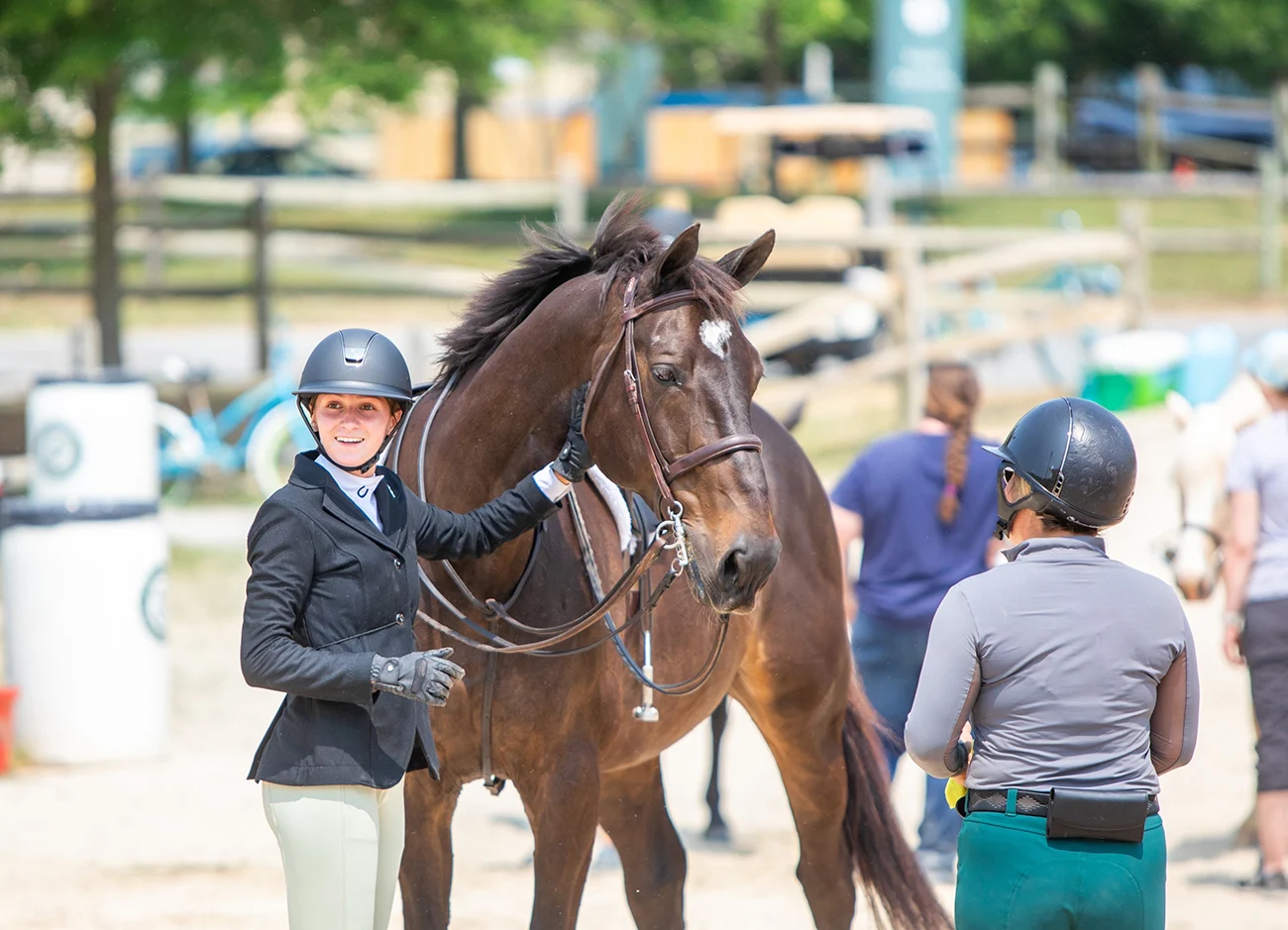
Lacie’s story has continued because of people who saw the fire in a rider who could go so very far if she had the financial means to do it. Lacie doesn’t have a family that could pay for a seasoned equitation horse when her horse went blind. She doesn’t board at a barn where someone else has one appropriate to be able to borrow. Her parents are at the barn every day with her working off her board. Her mother, Colleen, cleans stalls at the farm every day. Wayne, her father, spends his weekends trailering the horses to the shows, building jumps, fixing fences, whatever is needed. They make it work for Lacie.
If it hadn’t been for the Rachel Kennedys, the Ashley Holsingers or the dozens of others that have come in to make this work, Lacie would just be another rider watching from the bleachers, wishing she could compete in these classes. On July 1, Lacie and Andy received their required first-place medal, officially qualifying them for Finals. Lacie can now say, “I got to try.”
Without The Mayes Foundation grant, none of this would have happened. The next time you find yourself wondering where the barn rats have gone, think about donating to the foundation. If you do, you just might be able to see a few more of them be able to come out from behind the curtain our sport so often has.














